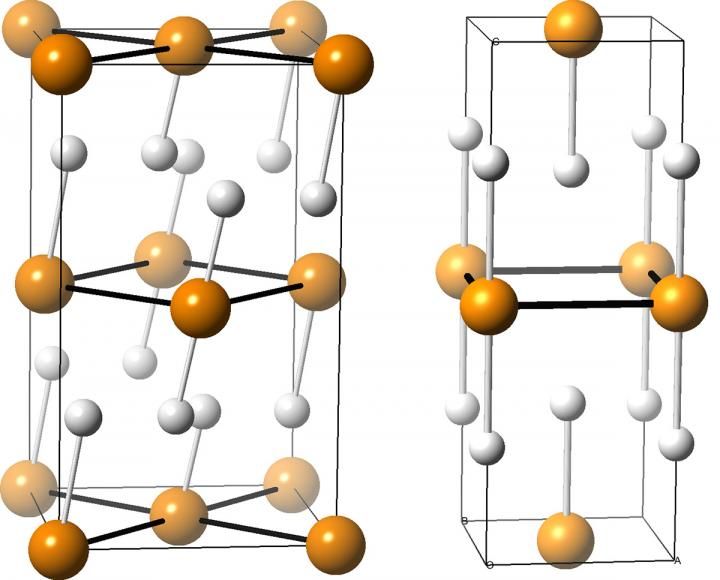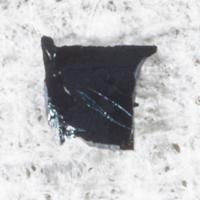Scientists mix and match properties to make new superconductor with chiral structure
Fine tuning crystal symmetry and superconductivity using solid solution methods
Researchers from Tokyo Metropolitan University have created a new superconductor with a chiral crystalline structure by mixing two materials, one with superconductivity but no chirality, another with chirality but no superconductivity. The new platinum-iridium-zirconium compound transitions to a bulk superconductor below 2.2 K and was observed to have chiral crystalline structure using X-ray diffraction. Their new solid solution approach promises to accelerate the discovery and understanding of new exotic superconducting materials.

A non-chiral, superconducting material and a chiral, non-superconducting material were combined in different element ratios to create a new compound with the properties of both.
Tokyo Metropolitan University
Scientists studying superconductivity are on a mission to understand how the exotic nature of superconducting materials arises from their structure, and how we might control the structure to get desirable properties. Of the many aspects of structure, an interesting recent development is the issue of chirality. Many structures have a “handedness,” that is, they do not look the same in a mirror. An effect of chirality in superconductors is to trigger something called asymmetric spin-orbit coupling (ASOC), an effect which can make superconductors more robust to high magnetic field exposure.
To understand chirality in more depth, however, scientists need more superconductors with a chiral structure to study. The usual route is to search out chiral compounds, check if they are superconducting or not, rinse and repeat: this is very inefficient. That is why a team from Tokyo Metropolitan University led by Associate Professor Yoshikazu Mizuguchi have introduced an entirely new approach. Instead of combing through lists of compounds, they mixed two compounds with known physical properties, a platinum-zirconium compound with superconductivity but no chirality, and an iridium-zirconium compound with a chiral structure, but no reports of superconductivity. By combining elements in a ratio that matches a certain proportion of each compound, they were able to effectively “mix and match” physical properties, coming up with a new material that had both a chiral crystal structure and superconductivity.
The team firstly studied different mixture ratios, finding that at around 80% iridium inclusion, the proportion of chiral crystalline structure (here, the P6122 structure of the chiral iridium-zirconium compound) increases rapidly at room temperature. Cooling samples to low temperatures, they were able to confirm superconductivity up to around 85%. This left a small window where both properties can manifest. Looking at their 80% mixture, they cooled the sample down to around where superconductivity was seen, finding that the proportion of chiral structure increases dramatically. Clearly, their new compound is a superconductor with a chiral structure.
The team also confirmed that the superconductivity arises in the bulk, not from the surface. Their work demonstrates the power of a “mix and match” approach in making new exotic superconductors, a welcome, dramatic boost in the hunt for more materials, and more understanding.
Original publication
Other news from the department science

Get the chemical industry in your inbox
By submitting this form you agree that LUMITOS AG will send you the newsletter(s) selected above by email. Your data will not be passed on to third parties. Your data will be stored and processed in accordance with our data protection regulations. LUMITOS may contact you by email for the purpose of advertising or market and opinion surveys. You can revoke your consent at any time without giving reasons to LUMITOS AG, Ernst-Augustin-Str. 2, 12489 Berlin, Germany or by e-mail at revoke@lumitos.com with effect for the future. In addition, each email contains a link to unsubscribe from the corresponding newsletter.
Most read news
More news from our other portals
Last viewed contents
Terephthaloyl_chloride
Diisopropyltryptamine
Category:Molecular_machine
Carbon-14
Six's_thermometer




























































